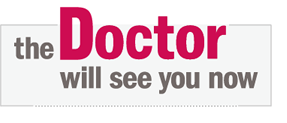In a breakthrough that bridges the familiar advice to “sleep on it” with hard science, researchers in Germany have shown that even short naps, provided they reach a stage of sleep known as N2, can dramatically boost the odds of scoring an “aha” moment.
Ninety healthy young adults between the ages of 18 to 35 were tasked with a deceptively simple dot-tracking test In a lab at the University of Hamburg: they watched clouds of purple or orange dots move across a screen and pressed buttons accordingly. Unbeknownst to them, the dot color subtly predicted the correct response. This was a hidden shortcut they would soon either discover, or not.
Each participant completed four pre-nap trials to become familiar with the task. Next, fitted with EEG monitors, they were invited to take a 20-minute nap during which time their sleep stages were recorded.Brief naps reaching N2 can significantly enhance creative insight. Not all naps are equal: slipping into deeper naptime matters.
After waking, the participants resumed their dot task. Here are the results:
- Over 85 percent of the N2 nappers uncovered the hidden shortcut, referred to as their “eureka” moment.
- Over 63 percent of the N1 nappers had a similar “aha” revelation.
- Only 55.5 percent of those who stayed awake were struck with the insight — a rate 30 percent lower than the best nappers.
“It's really intriguing that a short period of sleep can help humans make connections they didn't see before,” Nicolas Schuck, professor of cognitive neuroscience at the University of Hamburg said, summing up the findings in a news release. “The next big question is why this happens. We hope that our discovery that it may be linked to the EEG spectral slope is a good first lead.”
Brief naps reaching N2 can significantly enhance creative insight, with the EEG evidence pointing to sleep-induced neural resets, the research team concluded. It also signals that not all naps are equal: what matters is that one slips into a slightly deeper nap.There was a hidden shortcut they would soon either discover, or not.
How can you do that? Here are some tips:
- Keep it short. Twenty minutes is enough to reach N2 without drifting into slow-wave or REM sleep.
- Time it right. Early afternoon, between one to 3 o'clock PM, aligns with natural circadian rhythms.
- Set the scene. Make sure the room is cool between 65 to 68 degrees F. Lower body temperature aids entry to N2. You'll also want the room to be dark and quiet.
- Use a gentle alarm. A light buzzer or phone vibration gently rouses you without grogginess.
- Cue the brain. Set aside a specific time and place for your snooze in order to train your brain to associate these circumstances with napping and help you fall asleep quickly.
So, you're facing a problem and feeling stuck, skip the caffeine and sleep on it — literally. A well-timed nap and a 20-minute journey into N2 sleep could be all it takes to awaken your next groundbreaking inspiration.
The study is published in PLOS Biology.





